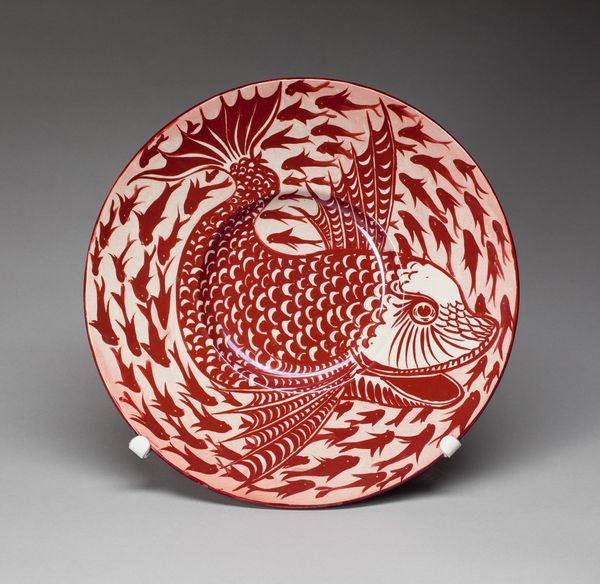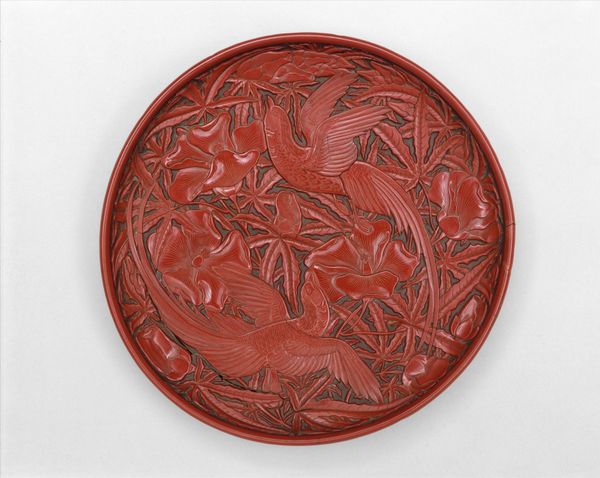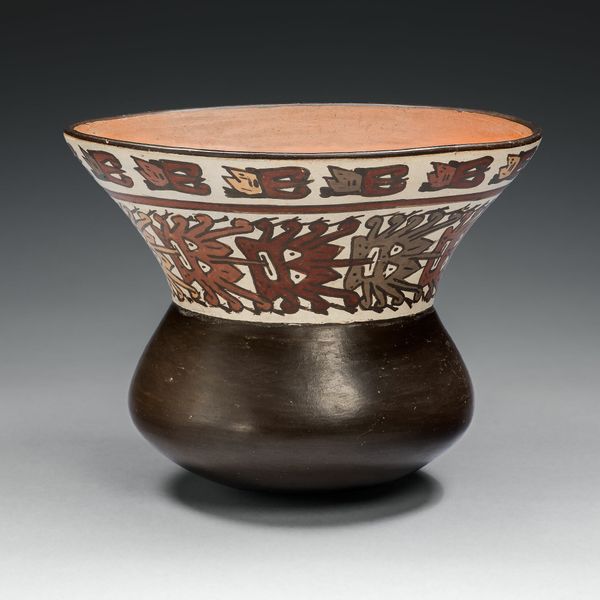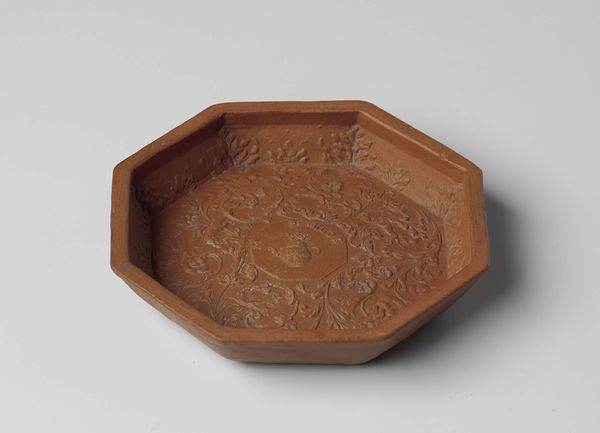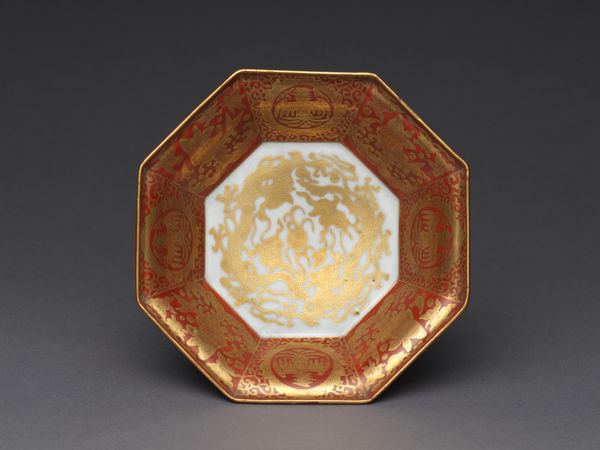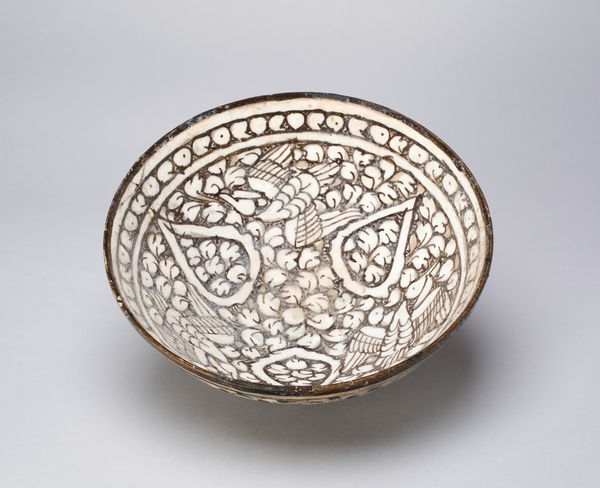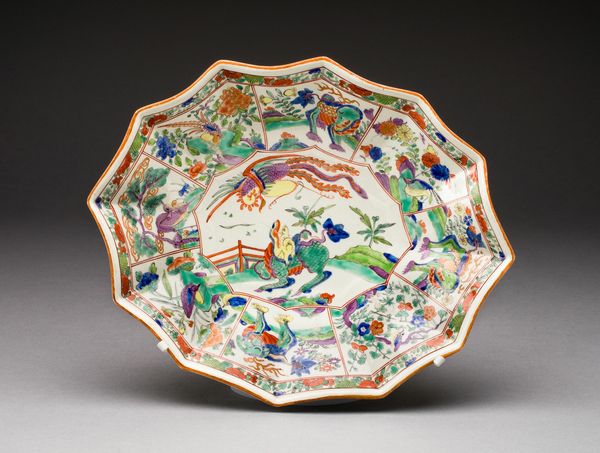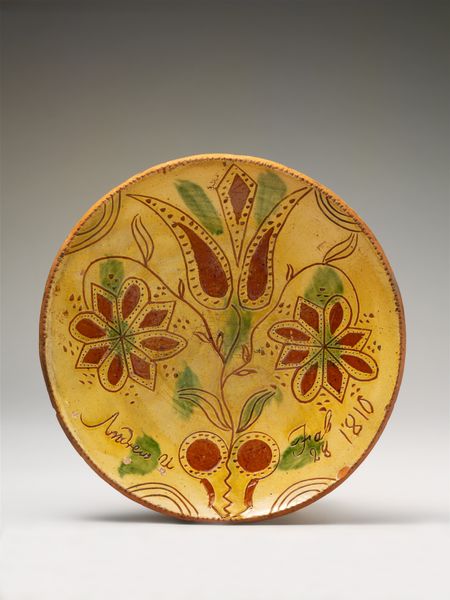
carving, ceramic, earthenware, sculpture
#
carving
#
asian-art
#
ceramic
#
flower
#
21_yuan-dynasty-1271-1368
#
earthenware
#
geometric
#
sculpture
#
ceramic
#
china
#
decorative-art
Dimensions: H. 1/4 in. (.6 cm); Diam. 6 11/16 (17 cm)
Copyright: Public Domain
Editor: Here we have a carved dish with peonies, crafted sometime during the Yuan dynasty, so around 1300 to 1368. It is currently located here at the Metropolitan Museum of Art, but was made in China by Yang Mao. The primary material seems to be carved earthenware with a ceramic glaze, or a ceramic with carved decorations. It feels so intricate and decorative, but also maybe ceremonial. What do you see in this piece? Curator: Well, from a historical perspective, this dish offers insight into the Yuan dynasty’s complex relationship with cultural production. Carved lacquerware like this wasn't simply decorative; it was often a symbol of status and refined taste. Think about the social hierarchies at the time: Who commissioned such pieces, and what did possessing them signify? Editor: So, it was meant to signal wealth and power? How does that relate to the peony design? Curator: Exactly! The peony itself is highly symbolic. In Chinese art, it represents wealth, honor, and nobility. It’s not a coincidence that these motifs became prevalent during a time of shifting social structures and Mongol influence in China. One might ask: Was this embrace of traditional imagery a way to assert cultural identity, or perhaps negotiate power dynamics? Editor: I guess I hadn’t considered how political something seemingly so beautiful could be! It really does make you think about the context in which these objects were created and consumed. Curator: Precisely! The beauty is undeniable, but the true depth lies in understanding its place in history and the power structures it reflects. I wonder where it may have been located and by whom within China's high society. Editor: That’s fascinating, it changes how I look at this, understanding that art has been created as part of an engagement with larger power struggles throughout history.
Comments
No comments
Be the first to comment and join the conversation on the ultimate creative platform.
